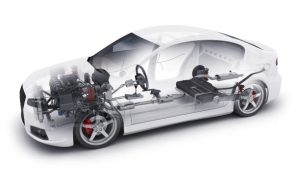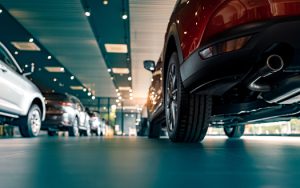More than any other technology in the history of transportation, the vehicle has both positive and negative implications. Cars, which are the most often used form of transportation, have altered how people live all over the world. All facets of society, including family life, the economy, and even the environment, have been impacted. It is difficult to find a movie, book, or television program without a car in it. The development of society as a whole has been directly impacted by the growth of automobiles over time. Automobiles have developed over the years to keep up with the times and have had a profound impact on every element of society.
In the 1920s, the first mass-produced car was made accessible to the general population. “Improved transportation was required in a world where going to the grocery store required traveling three miles to the east and taking 30 minutes” (Elliot 1). Cars made it simpler for people to travel in this world, which was beginning to expand out at a rapid rate, as suburbia developed. They became well-known for being a speedy and novel kind of transportation. Automobiles were first regarded as a luxury, but as they were produced in greater quantities, more people could buy them. The production process was altered to bring down the price to the point where the typical American could afford a car. Ford’s primary objective in building his production line was to make the Model T widely accessible to the general population. His reduced production cost made it possible to reduce the car’s final price as well. Between 1900 and 1920, Americans increased their car ownership from 8,000 to 80,000,000. (Hess 4). Reduced production costs had a big role in this.

The impact of vehicles on Americans’ daily life grew as they were used more and more. Suburbs were also growing more and more popular during this period. The suburbs’ expansion was greatly facilitated by the development of the vehicle. It had a significant impact on family life and contributed to a more mobile society. The automobile also had an impact on how women were viewed in society. The suburban housewife of 1960 needed a car to complete all of her shopping or pick up the kids from school, as opposed to the urban housewife of 1925 who could manage without one (Hess 9). Women in the city didn’t need vehicles because everything they needed was close by, and they could get around on foot. Women needed a comfortable and quick mode of transportation due to the expanding suburbs. They had the option to leave their regular employment at home and enter the “culture scene” (Hess 9). Women were no longer restricted to taking care of the home. By competing with men for the same types of occupations, they were able to achieve greater gender equality. The role of women in society has changed as a result of automobiles.
Cars were the newest and coolest item to own at the time. However, the invention of the automobile had unfavorable consequences. Traditional notions of family and unity were lost. Anyone could leave their existing environment and embark on their own unique projects. Because “individual family members could act upon their own wishes, rather than the dictation of the family as a whole,” people grew more independent (Elliot 2). People with an entrepreneurial spirit, like Ray Kroc, capitalized on the trend by building fast-food restaurants as people started to spend more time traveling than at home. In 1954, Ray Kroc opened the first McDonald’s of the current era in Des Plaines, Illinois, after purchasing the McDonald’s chain of six eateries. McDonald’s is still operating today and has locations all over the world. The widespread use of cars inspired the concept of a drive-through restaurant.
The more comfortable and convenient automobile had to be squeezed in between other kinds of transportation. The 1920s abrupt rise in popularity of the automobile had a particularly negative impact on bicycles, railroads, and horses. Since the 1890s, bicycles have been employed as a more effective mode of transportation than walking. The development of the vehicle substantially reduced the use of bicycles. Horse and carriage, however, was the mode of transportation that was most popular before the advent of automobiles. Unfortunately, the number of horses on the average farm fell by a third between 1915 and 1930. (Young 4). The cities grew cleaner as a result of the horse and carriage system being abandoned. Horses used to leave their rotten dung all over the city streets. Now since there was no more animal waste on the streets, people believed that the vehicle was making their towns cleaner. The train was a popular alternative mode of transportation during this time. Trains were utilized to move cargo and passengers across great distances quickly across the nation. Train passengers fell down as soon as cars gained popularity. Between 1920 and 1929, the number of railroad passengers fell by 40% as a result of the vehicle (Hess 4). Companies that operate railroads began to prioritize cargo transportation over passenger service. The railroad was forced in the middle when airplanes were developed. People started using airplanes for longer journeys and automobiles for shorter ones. Trains are still mostly used for carrying commodities today. Today’s passenger trains are comparable to a rapid bus with minimal traffic.
In the initial phase of the automobile’s development, there was around one car per family, but in the second phase, there was about one car for every individual. Car registrations increased by 25 million in the 1960s (Hess 10). Because the standard A to B car had already been created, auto engineers concentrated on making the vehicle more efficient. The addition of air conditioning to the automobile options was a significant update. On hot days, people could now spend hours in their cars without getting too overheated. People appreciated being able to alter the temperature of the automobile with the press of a button. Car designers searched for minute features that can improve the comfort of the passengers. The more popular an automobile was, the more pleasant and appropriate it was for your travel needs.

People started to take greater pride than ever before in their cars throughout this period. All drivers have one thing in common, regardless of whether they want the quickest or the most attractive vehicle. They didn’t simply utilize their cars for getting around; they also used them for enjoyment (Hess 9). Because petrol was so inexpensive, people would load into cars with all of their pals and drive about for half the night. With each passing year, more people gained interested in cars. The size of their engines, which could be modified to produce more power than a current Ferrari, was something that drivers took great pride in.
